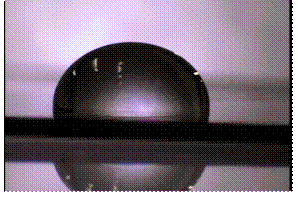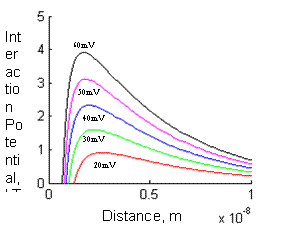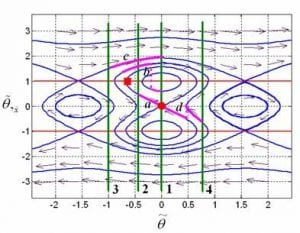We have developed techniques for controlled deposition of carbon nanotubes from an aqueous suspension onto a substrate. We typically work with DNA-CNT dispersions and deposit onto silicon wafers coated with an organic self-assembled monolayer. We find that there are two possible phenomena that occur. Nanotubes appear to deposit by hopping over an electrostatic potential barrier. Under some conditions, it appears that nanotubes deposit randomly and are aligned by a passing meniscus. Under other conditions, they appear to deposit aligned, and we have hypothesized that this is due to the formation of a liquid crystal sheet.
Drop of DNA-CNT dispersion on a hydrophobic silicon substrate.
Deposition of DNA-CNT onto a hydrophobic surface followed by re-alignment by a meniscus.
Interaction potential between DNA-CNT and a surface: deposition is modeled as activated hopping over the electrostatic potential barrier.
(Constantine Khripin and Ming Zheng)
The figure below shows how we view the other possibility, that DNA-CNT rods form an elastic liquid crystal sheet.
What’s this? …..
It’s the phase plane plot of a differential equation.
that describes the behavior of a sheet when matter can flow in and out of it to minimize free energy. It arises out of our work to understand how sheets of carbon nanotubes in solution might behave if subjected to external constraints and moments.
( Constantine Khripin & Tian Tang)





